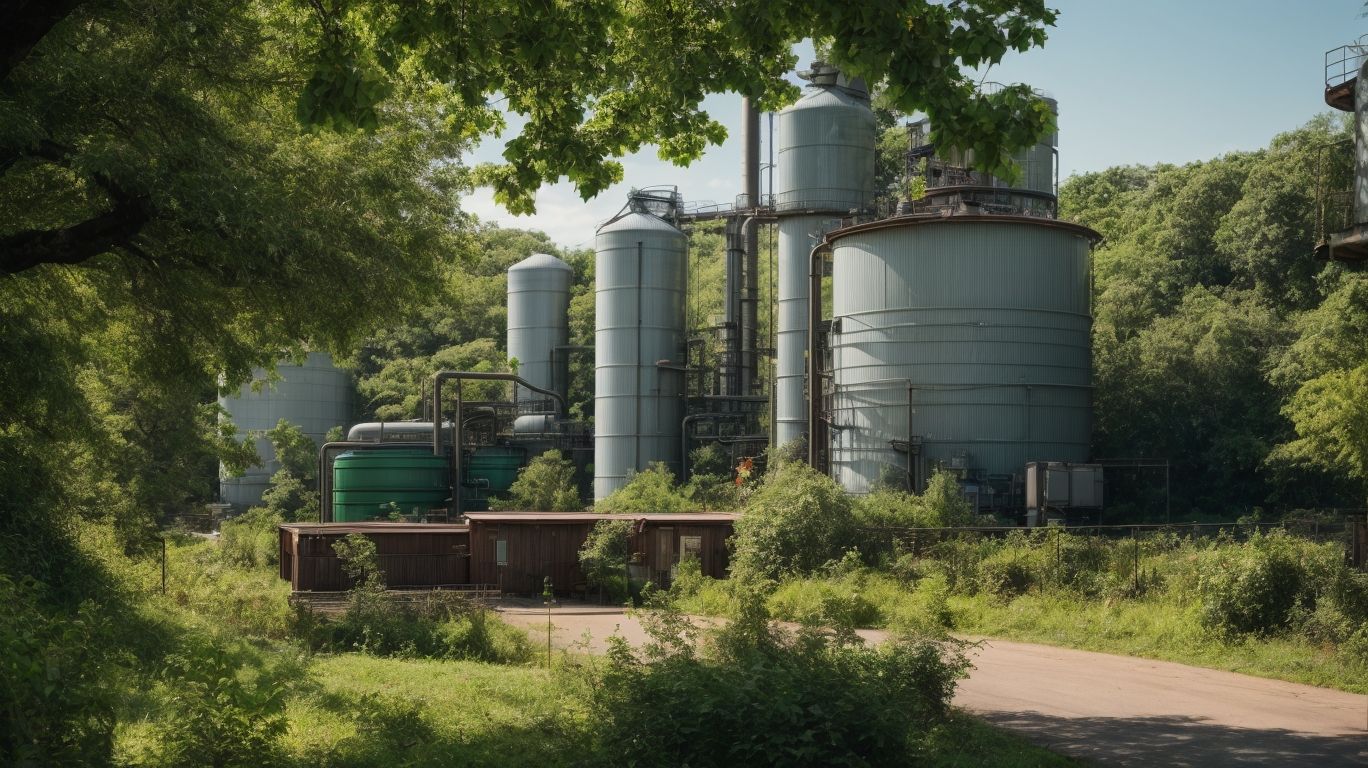Benzene is a colorless and highly flammable liquid that is commonly used in the production of plastics, rubbers, detergents, and other chemicals. It is a volatile organic compound (VOC) that is known to have adverse effects on the environment and human health. In this comprehensive guide, we will explore the various aspects of benzene, including its uses, environmental impacts, health risks, and ways to prevent and reduce exposure.
Benzene is primarily used as a precursor in the production of various industrial products, including plastics, synthetic rubber, dyes, pharmaceuticals, and detergents. It is also found in gasoline and other petroleum products, making it prevalent in the environment.
One of the major environmental impacts of benzene is air pollution. It is released into the atmosphere through industrial emissions, gasoline evaporation, and natural sources such as forest fires. Benzene can also contaminate water sources, leading to aquatic life damage and human health risks through consumption. Long-term exposure to benzene has been linked to various health risks, including anemia, leukemia, and other blood disorders.
Prevention of benzene pollution can be achieved through implementing regulations and laws that limit the emission of benzene from industries and vehicles. Implementing alternative methods and technologies that do not require the use of benzene is also a crucial step towards reducing its environmental impact. Individuals can also play a part in reducing benzene exposure by using alternative products and being mindful of the foods and drinks that contain it.
Monitoring and measuring benzene pollution is essential in understanding its impact on the environment and human health. Advanced technologies and methods, such as gas chromatography and photoionization detection, are used to measure benzene levels in air, water, and soil. Tracking and monitoring benzene pollution in the environment can also be achieved through regularly testing and sampling various sources, such as industrial emissions and water supplies.
By understanding the environmental impact of benzene and taking necessary steps to prevent and reduce exposure, we can work towards a safer and healthier environment for all.
Key Takeaways:
What Is Benzene?

Photo Credits: Chemicalglossary.Net by Tyler Nguyen
What Is Benzene? Benzene is a natural constituent of crude oil and is a basic petrochemical. It is a colorless, aromatic, and highly flammable liquid. Benzene is used to make plastics, resins, synthetic fibers, rubber lubricants, dyes, detergents, drugs, and pesticides.
How Is Benzene Used?

Photo Credits: Chemicalglossary.Net by Zachary Harris
- Benzene is primarily used as an intermediate to produce various chemicals, such as styrene, which is a crucial component in the production of plastics and rubber.
- It is also commonly utilized in the manufacturing of detergents, pesticides, and pharmaceuticals.
- Benzene serves as a solvent in numerous industries, particularly in the production of dyes, lubricants, and adhesives.
Pro-tip: When handling benzene, always adhere to strict safety protocols to minimize exposure risks.
What Are the Environmental Impacts of Benzene?

Photo Credits: Chemicalglossary.Net by Joseph Allen
The environmental impacts of benzene include soil contamination, water pollution, and air pollution. Benzene has the potential to seep into the soil and contaminate groundwater, posing a threat to plants, animals, and humans. Furthermore, the release of benzene into the air contributes to air pollution, affecting the overall quality of the air. When present in water bodies, benzene can be harmful to aquatic life, causing disruptions in ecosystems and damaging biodiversity.
What Are the Sources of Benzene Pollution?
Benzene pollution originates from multiple sources, including vehicle emissions, industrial processes, and tobacco smoke. It is released during the manufacturing of plastics, pesticides, and detergents. Furthermore, benzene can enter the environment through gasoline spills and the burning of coal and oil.
Strict adherence to emission standards and the promotion of clean energy alternatives can help reduce benzene pollution. In the nineteenth century, the widespread use of coal as an industrial fuel contributed to the increase in air pollution, prompting early efforts towards environmental conservation.
How Does Benzene Affect the Environment?
- Soil Contamination: Benzene seepage from underground storage tanks or industrial discharges can negatively impact the environment and disrupt ecosystems by contaminating soil and inhibiting plant growth.
- Water Pollution: Industrial runoff and oil spills can introduce benzene into water bodies, posing threats to aquatic life and contaminating sources of drinking water.
- Air Quality: Industrial emissions and vehicle exhaust release benzene into the air, contributing to air pollution and posing health risks to both humans and animals.
What Are the Health Risks Associated with Benzene Exposure?
What Are the Health Risks Associated with Benzene Exposure?
Exposure to benzene can pose serious health risks, including the development of leukemia, anemia, and damage to the immune system. Prolonged exposure can even lead to bone marrow failure and a decrease in red blood cells. Furthermore, benzene is a known carcinogen, increasing the likelihood of developing various types of cancer, such as leukemia and lymphoma. It is important to be aware of these potential health risks and take necessary precautions to avoid exposure to benzene.
How Can Benzene Pollution Be Prevented?

Photo Credits: Chemicalglossary.Net by Paul Anderson
- Regulation: Enforce strict regulations on industrial emissions and waste disposal to limit the release of benzene, thereby preventing benzene pollution.
- Alternative technologies: Encourage the use of benzene-free alternatives in manufacturing processes and products to prevent benzene pollution.
- Public awareness: Educate communities on the hazards of benzene exposure and the importance of preventing its release to prevent benzene pollution.
- Green practices: Promote eco-friendly practices in industries to minimize benzene pollution and prevent its harmful effects.
What Are the Regulations and Laws Surrounding Benzene?
Regulations and laws surrounding benzene revolve around limiting exposure in both workplaces and the environment. The Occupational Safety and Health Administration (OSHA) establishes permissible exposure limits (PELs) for workers, while the Environmental Protection Agency (EPA) regulates the amount of benzene emissions from industries. The Clean Air Act and the National Emissions Standards for Hazardous Air Pollutants (NESHAP) have set specific standards for controlling benzene emissions. It is of utmost importance to comply with these regulations in order to protect both human health and the environment.
What Are the Alternatives to Benzene in Industry?
Industries are actively seeking safer alternatives to benzene to mitigate its environmental and health impacts. Some substitutes include toluene, xylene, and ethylbenzene. Additionally, bio-based solvents like pine oil and orange oil are being explored for their eco-friendly properties.
In the early 20th century, the chemical industry began recognizing the potential hazards of benzene, leading to the exploration of alternative solvents and processes, marking a shift towards safer industrial practices. Some alternatives to benzene in industry include toluene, xylene, ethylbenzene, and bio-based solvents such as pine oil and orange oil, which offer more eco-friendly properties. This shift towards safer practices has been driven by the recognition of the potential hazards of benzene and the need for more environmentally friendly solutions.
What Steps Can Individuals Take to Reduce Benzene Exposure?

Photo Credits: Chemicalglossary.Net by Wayne Jones
- Avoid smoking and exposure to secondhand smoke.
- Choose products that are free of benzene, such as paints, glues, and detergents.
- Limit the use of cars and ensure proper ventilation in garages.
- Opt for organic produce to decrease exposure to pesticides.
In the 1950s, benzene was commonly used as a solvent in various industries, resulting in widespread exposure. However, thanks to ongoing research and regulations, benzene use and exposure have significantly decreased, promoting better environmental and human health.
What Foods and Drinks Contain Benzene?
Foods and drinks that may contain benzene are often those that have undergone processes such as preservation, packaging, or storage. These may include:
- Soft drinks with added benzoates as preservatives
- Fruit juices (particularly those with added Vitamin C)
- Certain types of beer and wine
- Processed water containing benzoic acid
It is important to note that benzene can form in these items when exposed to heat and light, which can pose potential health risks.
What Are the Best Practices for Handling and Disposing of Benzene Products?
When it comes to handling and disposing of benzene products, safety and environmental protection should be top priorities. To ensure this, here are some recommended best practices:
- Use engineering controls, such as enclosure and ventilation systems, to minimize exposure.
- Properly store and label benzene products to prevent spillage and accidental exposure.
- Dispose of any benzene waste through authorized channels and strictly follow regulations for hazardous waste disposal.
- Regularly inspect and maintain equipment to prevent leaks and ensure safe handling of benzene products.
By adhering to these practices, potential risks can be mitigated and responsible management of benzene products can be promoted.
How Can We Monitor and Measure Benzene Pollution?

Photo Credits: Chemicalglossary.Net by Nathan Thomas
- Direct Sampling: Conduct air and water sampling near potential emission sources to measure levels of benzene pollution.
- Remote Sensing: Utilize advanced technologies such as satellite imaging to monitor large geographical areas for benzene pollution.
- Regulatory Monitoring: Adhere to governmental guidelines for monitoring and measuring benzene pollution, using approved methods and equipment.
- Collaborative Efforts: Establish partnerships with environmental agencies and research institutions for comprehensive measurement and monitoring of benzene pollution.
What Are the Methods and Technologies Used for Measuring Benzene Levels?
Various methods and technologies are utilized to measure benzene levels, including gas chromatography, mass spectrometry, and photoionization detection. Gas chromatography is responsible for separating and detecting benzene in air samples, while mass spectrometry accurately quantifies benzene concentrations. Photoionization detection is a rapid method used for measuring benzene levels in the field. These methods are crucial in assessing environmental and occupational exposure levels to benzene.
Regular calibration and maintenance of monitoring equipment are necessary to ensure accurate measurements. Additionally, the use of advanced technologies such as portable gas chromatographs can greatly improve real-time monitoring of benzene levels in industrial and environmental settings.
How Can We Track and Monitor Benzene Pollution in the Environment?
- Use Gas Chromatography: Analyze air samples using this technique to accurately detect and measure benzene levels.
- Employ Passive Air Sampling: Place passive air sampling devices in strategic locations to collect air samples for later analysis.
- Utilize Remote Sensing Technologies: Satellite and aerial imagery can be utilized to track and monitor benzene pollution over large geographical areas.
By implementing these methods, we can effectively track and monitor benzene pollution, safeguarding both the environment and human health.
Frequently Asked Questions
What is benzene and how is it used in industrial products?
Benzene is a widely used industrial chemical that can be found in various products, such as gasoline, plastics, and rubber. It is used as a solvent for many industrial processes and is also present in small, uncontrolled workshops in developing countries.
What are the main sources of benzene exposure in the environment?
The main sources of benzene exposure in the environment include emissions from the gasoline and petrochemical industry, consumer products, and cigarettes. It can also be found in indoor environments with sources such as gasoline-powered engines and tobacco smoke.
How is benzene exposure characterized in human health studies?
Benzene exposure is measured through biomarkers, such as benzene in breath, blood, and urine, as well as urinary metabolites and blood protein adducts. These biomarkers are used to estimate exposure and potential risks, and can vary depending on factors such as non-benzene sources, metabolic rates, and genetic factors.
What are the potential adverse health effects of benzene exposure?
Benzene is a known carcinogen and can lead to various health effects, including an increased risk of acute non-lymphocytic leukemia, aplastic anemia, and other blood diseases. It can also have effects on the immune system, reproductive system, and nervous system.
How does exposure to benzene affect different populations?
Benzene exposure can affect different populations differently, with potentially susceptible populations including children, pregnant women, and occupationally exposed workers. Exposure levels can also vary from person to person depending on factors such as body weight and absorption rates.
What measures are being taken to manage and reduce benzene exposure?
Regulations, such as limiting benzene in gasoline and banning smoking in public and work places, have led to a decline in occupational and environmental exposures. Biomarker studies continue to provide clear estimates of benzene exposure, and monitoring methods have been developed to track exposure levels in the general population.
